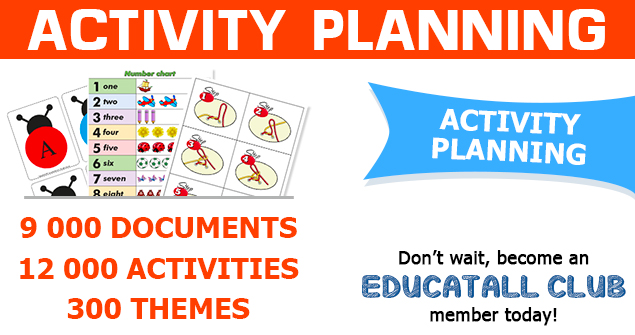How to motivate a passive child
I am sure you have heard the famous "I have nothing to do..." several times since the beginning of the year. Certain children, regardless of our efforts, are simply quick to lose interest in their activities. These children demonstrate their boredom in different ways: walking around in circles, following you around, bothering others...
We must consider the fact that this behaviour is part of who these children are. It is a personality trait, their temperament. There are interventions which may help, without of course, trying to change who children really are.
Several circumstances can lead to a child feeling bored:
- Certain children need more emotional security. It is difficult for them to separate themselves from the adult. They feel helpless when they find themselves alone and consequently, it is more difficult for these children to initiate or begin an activity on their own.
- The group's pace may be too quick and unsuitable for these children. This causes fatigue and lack of enthusiasm making participation in activities difficult.
- A lack of variety in regards to the material is possible. Sometimes, the material doesn't correspond to children's level of development.
- The activities offered fulfill only one field of interest. This entices children to disconnect and creates a certain feeling of boredom.
Intervention suggestions
- Establish a warm, trusting relationship with the child so he feels safe and capable of going about his activities autonomously. One way of doing this is to organize your day in a way which allows each child to have one on one time with you. Be sure the period is long enough to allow for quality exchanges. When a child does not get the attention he requires to accept to be separated from you, he may tend to constantly seek your presence during play time
- As in any situation, it is very important to observe the child. Adequate observation will make it easier to identify when the child is passive. His actions, gestures, interests....they are all clues. Question the child about the way he is acting. He will most likely provide clues as to how you can modify your interventions and maybe even the answer to your questions.
- Some children have limited interests. For example, a child may play well, but only with trucks and wooden blocks. When this material is unavailable, the child is lost... Use creativity to widen his fields of interest. Use his main interest, the material he already appreciates, and combine it with new material.
Example: You may place small cardboard boxes alongside the wooden blocks. You could also add puzzles related to means of transportation, books which refer to the theme, a truck driver costume or costumes which depict other means of transportation (fireman, policeman, pilot, captain, etc.). By presenting the child with this new material, you may spark an interest and help him take a step towards other activities. Progressively, you could combine the material with other items which are totally different such as arts & crafts material, musical instruments, or animals...
- Support the child's play. Make sure the environment and the available material are adequate for him to elaborate his game.
- Accept that the child needs certain periods throughout the day to do nothing at all. Set up an area where the child may be alone and uninterrupted. He can also go this area to avoid interrupting others.
- Be careful not to stimulate the child too much. This may lead to him needing constant adult presence when he is playing.
- Diversify the company of other children. Plan activities which require teams (make the teams yourself to encourage children to discover common interests). Organize activities which are done in small groups, larger groups, with groups of different ages, etc. You may visit another daycare to meet new friends.
I hope these tips will help and that you will have fun!
Sonia Leclerc
No
element of this text may be copied, reproduced, distributed, published,
translated, downloaded, posted, or transmitted, in any way, without
prior written authorization from Educatall and the copyright holder.
Elements may be posted and/or downloaded solely for personal and
non-commercial use provided no modifications are made and all notices
of intellectual property are fully shown (name of the author, title of
the article, name of the website, date the text is used and the date of
the part in question).

 Home
Home Theme activities
Theme activities
 Babies and toddlers
Babies and toddlers
 Arts and crafts
Arts and crafts
 Science
Science
 Creative recipes
Creative recipes
 Tips and tricks
Tips and tricks
 Special needs
Special needs
 Extra activities
Extra activities
 Educ-TV
Educ-TV
 Newsletter
Newsletter  Online store
Online store Educatall club
Educatall club
